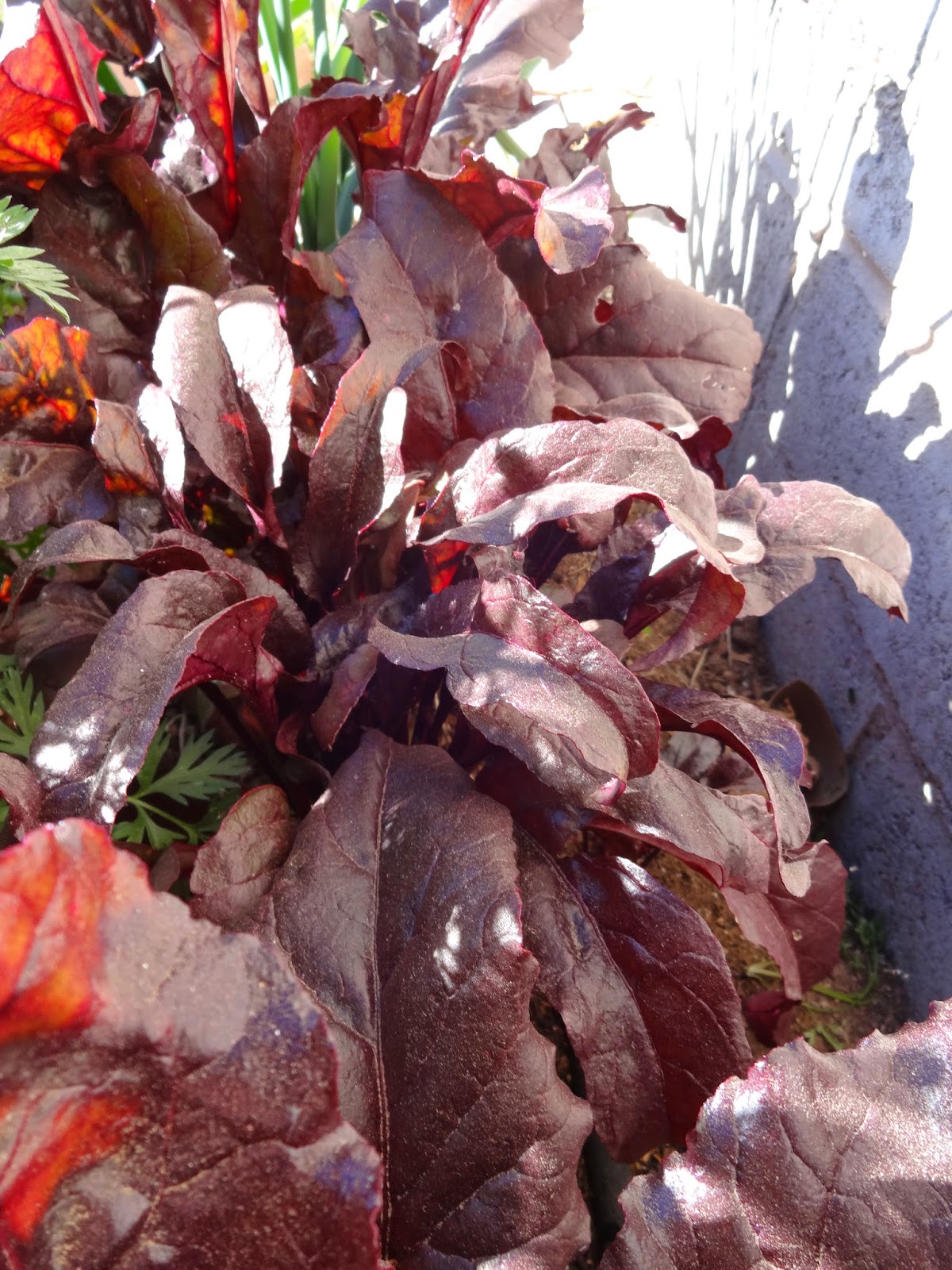 |
| Taste alright, howbeit a bold earthy taste. |
From the very beginning of my experience with McGregor’s Favorite Beets the plants were incredibly slow to grow. The vigor of the seed I received was weak and multiple plantings were necessary to have enough plants to trial.
 |
| It seemed to take forever for McGregor's Favorite Beets to grow. |
 |
| Where did the beets go? |
 |
| There they are! (= |
Initial seedlings exhibited bright green leaves and secondary leaves were green as well. It was not until later in the season that a few thin dark red leaves appeared and this color only seemed to persist for about 1-2 months before the later growth began to be green again.
 |
| McGregor's Favorite Initial Green Growth |
 |
| Intermediary red/purple growth |
Though the dark red leaves may be a product of optimal climate conditions, one would think that if optimal climate condition are required to exhibit a specific trait that the specific variety might not be worth growing. The taste and texture of the dark red leaves was nothing exceptional. In my opinion, the texture, taste and color of Bull’s Blood leaves greatly exceeded that of McGregor’s favorite. About half way through the season I was beginning to feel that some very rare vegetable varieties are nearly extinct for a reason.
Though the dark red leaves may be a product of optimal climate conditions, one would think that if optimal climate condition are required to exhibit a specific trait that the specific variety might not be worth growing. The taste and texture of the dark red leaves was nothing exceptional. In my opinion, the texture, taste and color of Bull’s Blood leaves greatly exceeded that of McGregor’s favorite. About half way through the season I was beginning to feel that some very rare vegetable varieties are nearly extinct for a reason.
 |
| Bull's Blood Beets' color remains consistently red/maroon throughout their growth |
 |
| Bull's Blood Beet root tastes pretty good. |
Because
the McGregor’s favorite beets were so slow to sprout and grow I had to wait
until April to begin harvesting any of the roots. Note – this was not for lack
of light, water, or nutrients - all the other vegetables in the garden were
growing very well. The roots exhibited variable shape and size, the texture was
tough and the flavor was very earthy.
Although all roots can exhibit branching, with the very soft compost soil that I grow my plants in I was surprised by the tendency of the McGregor’s favorite beet to branch.
 |
| Branching Beet Bottoms bewilder Botanists |
 |
| McGregor's favorite variable root shape and size is not very marketable. |
The texture was very hard to begin with and several of the roots had white pithy material that I feared might be woody (it turned out to be okay). Because the roots were hard, they took a little longer than other beets to cook.
 |
| Amputation of the leggy beet. |
 |
| Concern that the core may be pithy. |
Once the beets were cooked the flavor was quite earthy. Though my wife loves the bold taste of “dirt” in her beets, I prefer a more subtle or slight earthy taste in the beets I grow.
 |
| Growing Cylindra beets. |





I would love any beets right now...I get the greens but not the roots...but I still try. I like the look of the Bull's Blood.
ReplyDeleteDear Donna,
DeleteThanks for the reply. I always put down a tiny bit of borax (my gardening books say boron in trace amounts is essential for root growth). That, plus giving them plenty of time to grow has always done the trick for me. The Bull's Blood is quite good and very flashy in salads. (=
How interesting!
ReplyDeleteThe young one leaves are red and changes as mature unlike chiogga which your leaves is not red but green.
Thank you for the detail observation :).
Dear Malay-Kadazan girl,
DeleteThanks for the reply. I try to be thorough in my observations.
I have not tried Chiogga yet. How do they compare to other beets you have grown?
The leaves are attractive enough to grow in my front yard garden, along with the perennials and a few other veggies that blend in with them, appearance-wise.
ReplyDeleteRay